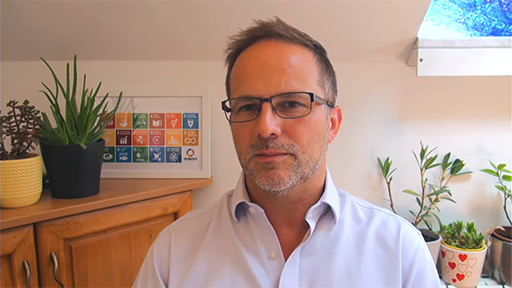6.1 Exploring your digital carbon footprint
Sustainability is now essential, and part of the digital transformation that organisations need to consider. In this section we consider what HEIs can do to manage their carbon footprint.
‘IT is often one of the biggest contributors to an education institution’s own carbon footprint, with one UK college attributing 20% of its emissions to IT alone.’ (Exploring digital carbon footprints, Jisc [Tip: hold Ctrl and click a link to open it in a new tab. (Hide tip)] , 2022). Reducing digital carbon footprints whether those of organisations or individuals will become a priority as HEIs have committed to get to net zero by 2050 or before.
The Exploring digital carbon footprints report from Jisc focuses on source and impact of four key areas: procurement, on-premises IT, cloud technologies and remote working, which we recommend you read outside of this course due to its length.
In the video below Scott Stonham, the author of the report, provides an overview of the key areas of the report.

Transcript
You may wish to read the following articles on OpenLearn by Scott Stonham that provide further insights:
- Reducing the digital carbon footprint of the cloud
- Reducing the carbon footprint of on-premises IT
- How we can all tackle our digital carbon footprints
- Reducing digital carbon footprint through responsible procurement
- Digital carbon footprints and remote working
- How can corporations reduce digital carbon footprints
- What is a digital carbon footprint?
The strategy for reducing your digital carbon footprint needs to be considered alongside all elements of organisational development. If this is an area you have an interest in we would recommend you review the Hybrid working: Organisational development course within this collection.
As organisations adopt more sustainable practices, you as an individual need to be open to new ways of working, and commit to changes you can make both in your professional and personal lives.
Digital carbon emissions can be difficult to visualise as how often do you think about what is involved for technology to exist? When you talk about cloud computing what image comes to mind?
At a basic level the cause of the rising digital carbon footprint is due to:
- manufacturing and shipping of parts and products
- powering and cooling of technologies infrastructures
- disposal of electronic waste (e-waste)
- behaviour of consumers.
Manufacturing processes are not always sustainable, data centres (the cloud – the physical servers that store and process data) consume energy continually and require cooling ventilation. Electronic devices require energy to run, and e-waste can be difficult to recycle due to the non-renewable resources within products.
Activity 22 Reducing your digital data carbon footprint
The amount of digital data within organisations grows daily, and managing this is challenging. While organisations will have policies, processes and automated systems to try to help reduce redundant data, some of these are dependent on individuals to manage digital data responsibly.
In the video below Scott shares insights into how digital data impacts digital carbon footprints and the measures organisations and individuals can take. As you watch, make notes on areas you believe could be easily adopted, and commit to changes you can make as an individual.

Transcript
The Exploring Digital Carbon report includes simple tips that can help reduce carbon footprint and tools to help understand your emissions, including the following.
- Consider how much you are using your smartphone (the average usage is 2.5 hours day).
- Reduce the brightness of your monitor.
- Turn off devices, even in ‘stand-by mode’.
- Reduce the use of email – read the article ‘The hidden cost of your emails on the planet’
- Simplify email signatures – remove unnecessary images.
- Delete electronic files and emails you no longer need and empty your deleted items folders.
- Download instead of stream audio and video.
- Unsubscribe from enewsletters you no longer want to receive.
- Extend the life of your products – do you really need the latest model? Think of the four Rs: reduce, repair, reuse, recycle.
In this video Scott provides further tips and advice on how you can reduce your digital carbon footprint.

